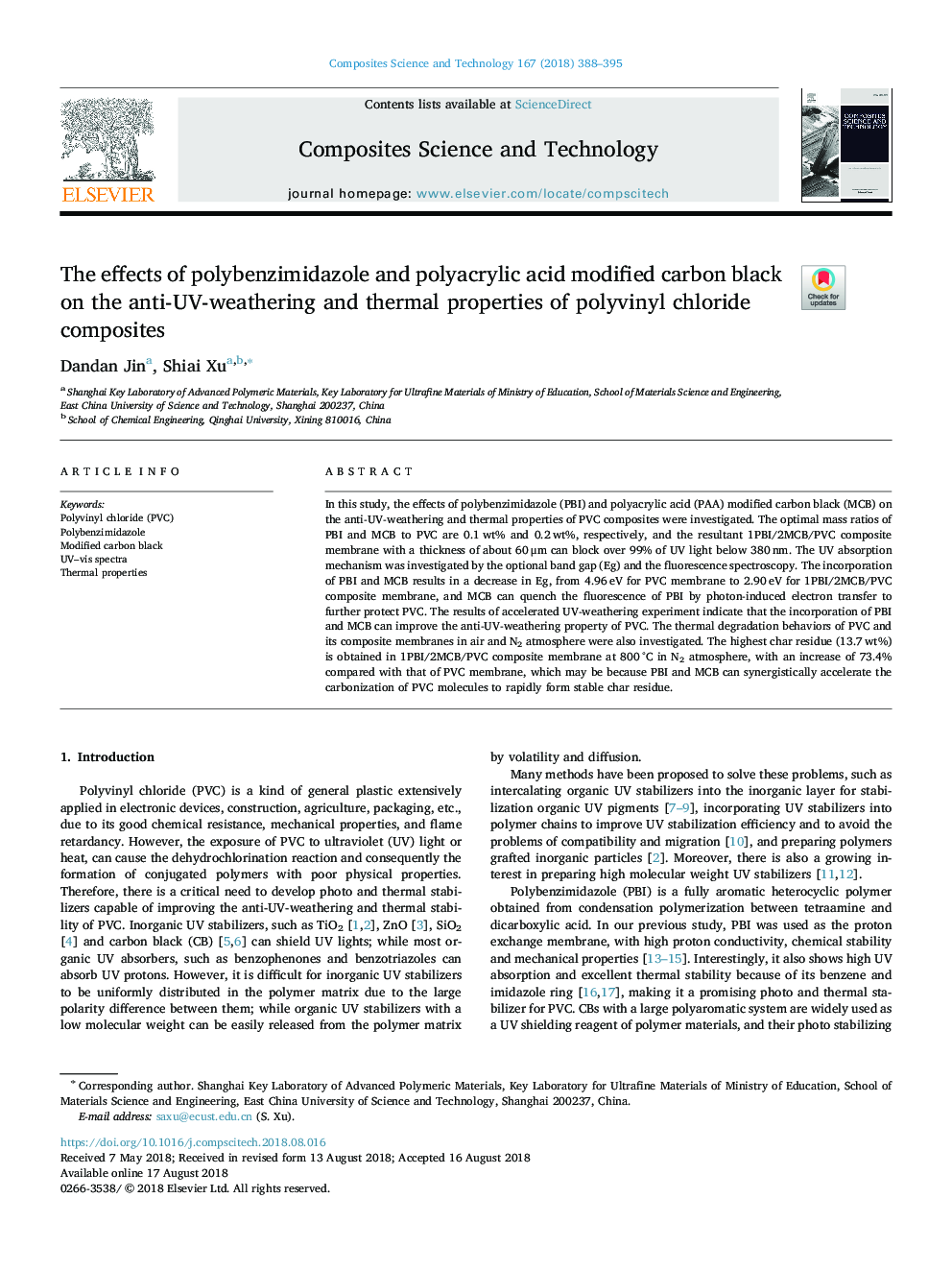| Article ID | Journal | Published Year | Pages | File Type |
|---|---|---|---|---|
| 11004258 | Composites Science and Technology | 2018 | 8 Pages |
Abstract
In this study, the effects of polybenzimidazole (PBI) and polyacrylic acid (PAA) modified carbon black (MCB) on the anti-UV-weathering and thermal properties of PVC composites were investigated. The optimal mass ratios of PBI and MCB to PVC are 0.1â¯wt% and 0.2â¯wt%, respectively, and the resultant 1PBI/2MCB/PVC composite membrane with a thickness of about 60â¯Î¼m can block over 99% of UV light below 380â¯nm. The UV absorption mechanism was investigated by the optional band gap (Eg) and the fluorescence spectroscopy. The incorporation of PBI and MCB results in a decrease in Eg, from 4.96â¯eV for PVC membrane to 2.90â¯eV for 1PBI/2MCB/PVC composite membrane, and MCB can quench the fluorescence of PBI by photon-induced electron transfer to further protect PVC. The results of accelerated UV-weathering experiment indicate that the incorporation of PBI and MCB can improve the anti-UV-weathering property of PVC. The thermal degradation behaviors of PVC and its composite membranes in air and N2 atmosphere were also investigated. The highest char residue (13.7â¯wt%) is obtained in 1PBI/2MCB/PVC composite membrane at 800â¯Â°C in N2 atmosphere, with an increase of 73.4% compared with that of PVC membrane, which may be because PBI and MCB can synergistically accelerate the carbonization of PVC molecules to rapidly form stable char residue.
Related Topics
Physical Sciences and Engineering
Engineering
Engineering (General)
Authors
Dandan Jin, Shiai Xu,
